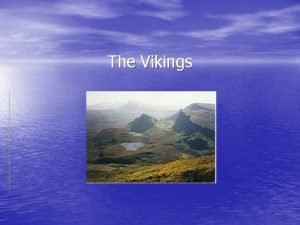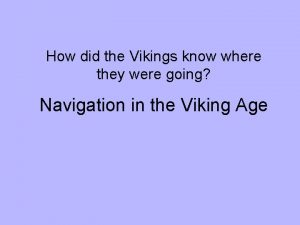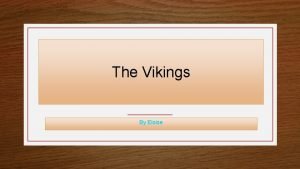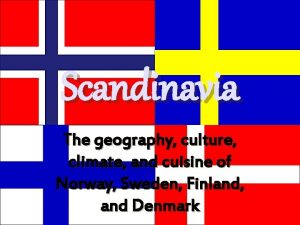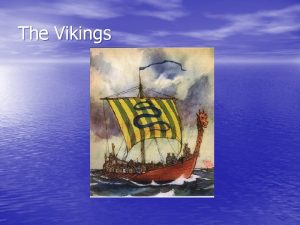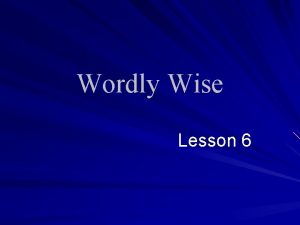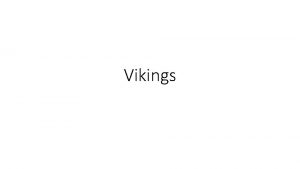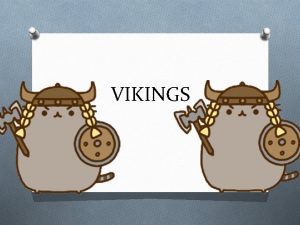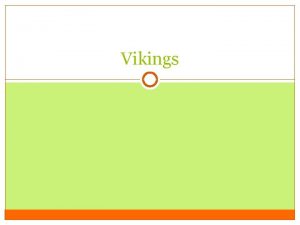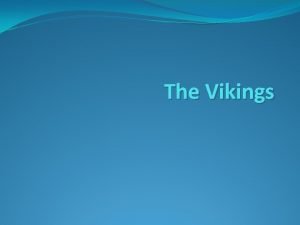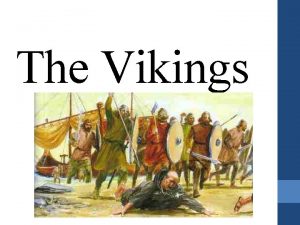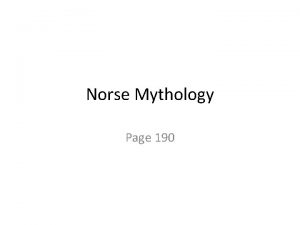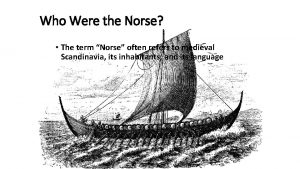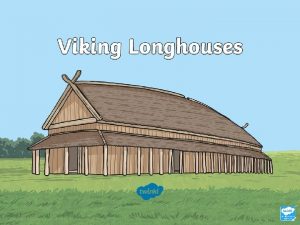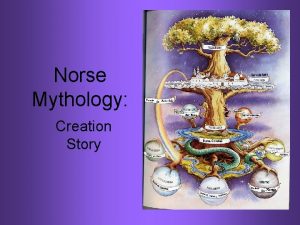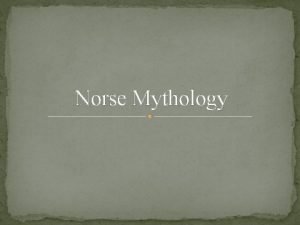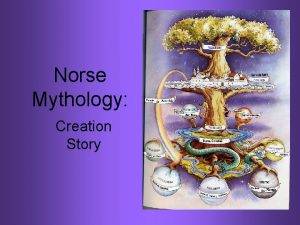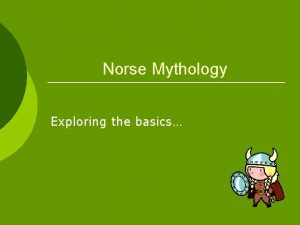The Vikings Who were they Norse Scandinavian explorers


















- Slides: 18

The Vikings

Who were they? • Norse (Scandinavian) explorers, warriors, • • merchants, and pirates raided and colonized wide areas of Europe from the late eighth to the early eleventh century They reached: Constantinople, the Volga River in Russia, Iceland, Greenland, and Newfoundland (Canada), Britain, Ireland, Sicily and some ports of the Mediterranean


Reasons for travels and colonization • Outgrowth of farm lands in Scandinavia • Weakness of other kingdoms and settlements all over Europe • Supreme navy and expertise in warfare • Treasure and adventure

Weapons and warfare • All free Norsemen were allowed to carry weapons • helmet, shield, chain mail shirt, sword, axe, knife, spear and bows and arrows • Typical battle: - attack the ports from ships with inflamed arrows - create confusion - land quickly siege - destroy defense - raid, kill and take everything moveable - board back on ship and - leave (with booty, women, young boys, animals)

Ships • the longship (called "drakkar", "dragon" in Norse) • the knarr (merchant vessel designed to carry cargo)




Society • High lords • Warriors • Priests • Women • Slaves

Characteristics • They were literate (runes) • Heroic tales • Mysticism • Burial sites • Legends • mythology

Norse gods and goddesses • Odin - the ruler of the gods, and the god of magic, poetry and • • • war. His wife was the motherly Frigg their son was Balder, who was kind and gentle. Freyja was goddess of love and fertility, and wept golden tears when she was unhappy. She had a twin brother Freyr, and their sacred animal was the boar. Red-headed Thor ruled the skies, storms and thunder. He had iron gloves, a magic belt and a hammer People loved Thor but did not trust Loki, the mischievous 'trickster god'. By a trick, Loki caused the death of Balder.

The dead and the Valhalla • A dead person was buried or cremated (burned) • • • with some of their belongings Some Viking chiefs were given ship-burials, with treasure, weapons, and favourite dogs and horses buried with them. Vikings believed that a warrior killed in battle went to Valhalla, a great hall where dead heroes feasted at long tables Odin sent his warror-maidens, the Valkyries to take them to Valhalla

Stories and legends • Midgard or Middle Earth, along with giants, elves and • • dwarfs The gods and goddesses lived in a sky world called Asgard. Linking Midgard with Asgard was a rainbow bridge. tales of monsters, trolls, dragons, sea serpents, and the fierce wolf Fenrir (which the gods tried to keep chained up). Odin rode a magical horse named Sleipnir, which had eight legs. did not want to die in bed, because they were afraid they'd go to a foggy underworld called Niflheim

Other beliefs • Vikings believed a flash of lightning meant Thor had • • flung his hammer. People left gifts of milk for the elves in little bowls Odin gave up one of his eyes to drink from a magical fountain of wisdom. Odin had two ravens. Mugin and Hugin, who flew around to bring him news of the world. Vikings believed the world was flat and surrounded by sea; it was held up by a giant tree called Yggdrasil.

Legacy • 35% of European men and 40% of women have Viking genetic origin • The fascist imagery (blond, Arian, brave fighters, supreme of others) • Music (Wagner) • pop culture: Viking metal shows modern influence of the Viking myths. It was a popular sub-genre of heavy metal music, originating in the early 1990 s connected to the black metal sub-genre.

Common misconceptions • Horned helmets – no preserved helmets with horns • Skull cups – used regular wooden or metal cups • Uncleanliness - bathing every Saturday and combing their hair often.

 Vikings: merchants and explorers
Vikings: merchants and explorers How did the vikings know where they were going
How did the vikings know where they were going What were the vikings known for
What were the vikings known for Icca scandinavian chapter meeting 2021
Icca scandinavian chapter meeting 2021 What separates europe from asia
What separates europe from asia Scandinavian peninsula
Scandinavian peninsula Scandinavian tire and rim organization
Scandinavian tire and rim organization Scandinavian climate and geography
Scandinavian climate and geography Scandinavian jobs
Scandinavian jobs Scandinavian berry
Scandinavian berry The vikings were sailors came
The vikings were sailors came Vikings lands
Vikings lands Jo vestey
Jo vestey Explorers wordly wise
Explorers wordly wise Explorers or boys messing about
Explorers or boys messing about European exploration webquest
European exploration webquest Spontaneous budget explorers
Spontaneous budget explorers Tgcsa logo 5 star
Tgcsa logo 5 star Famous european explorers
Famous european explorers
